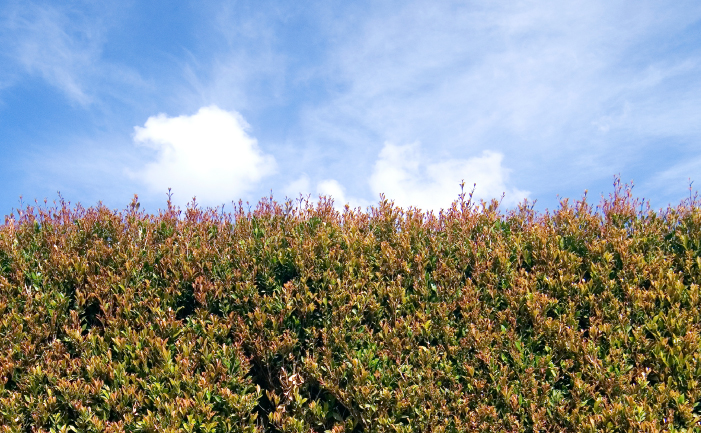There’s nothing worse than nosey neighbours!
Nigel Ruck showed some of the best privacy plants to help protect your backyard oasis.
Before you buy your privacy plants, you need to work out how big you want them to grow. If you don’t know how tall or wide you want it, your nurseryman is not going to be able to help you. Once you’ve worked out what you want size-wise, there are plenty of choices:
Murraya paniculata (orange jessamine) is very reliable privacy plant which grows to 3-4m. Seen in hundreds of gardens across Australia, Murrayas are a popular choice as they are quite fast growing and hardy, plus they have pretty white flowers.
Sweet viburnum (Viburnum odoratissimum) is a great dense hedge for many areas of Australia, reaching a height of around 3-4m.
Lily pillies. There are lilly pillies suitable for growing in most parts of Australia. Many of the varieties sold suffer from dreadful leaf dimpling caused by psyllids. But there are several varieties that do not get psyllids. Syzygium luehmannii, the Acmena sp. and Syzygium francisii are psyllid-free.
There are some newer lilly pillies that only grow to the height you require, which will save you a huge amount of pruning time. ‘Hot Flush’ (Acmena smithii) grows up to 3m, ‘Little Gem’ (Syzygium francisii) grows to 2-3m, and ‘Goodbye Neighbours’ (Acmena smithii) is a fast growing lily pilly that grows to 10m, which is perfect if you want to screen a two-storey house.
Sasanqua camellias are a beautiful choice for formal gardens. Gorgeous glossy green leaves and a huge variety of flower colours. This is an old-fashioned hedging classic.
Photinia robusta is another very popular choice you see growing in many Australian gardens which grows to around 5m. With its gorgeous red new growth & dense growth habit Photinia robusta and some of the new smaller-growing varieties such as Photinia x fraseri ‘Red Robin’ which grows to around the 2m mark, are excellent choices.
The Port Wine Magnolia (Michelia figo) is another good choice reaching around 3m in height.
Pittosporum, good for cooler climates, the James Stirling type (Pittosporum tenuifolium) is the most common, but unfortunately you can get the odd one dropping dead on you, which is not good in a row of hedges! New varieties such as ‘Screen Master’ claim to be much hardier.
Conifers Many are good for colder climates and as far north as Newcastle. Juniperus virginiana ‘Spartan’ and Thuja occidentalis ‘Smaragd’ are good ones, and grow to just 4-5 m.
BEWARE: Watch out for ‘Leighton Green’ (Cupressocyparis leylandii). Many councils are seeking to ban this plant and it is causing disputes between neighbours. It gets HUGE and although you can trim it, you will be constantly be pruning this plant to keep it to reasonable height.



